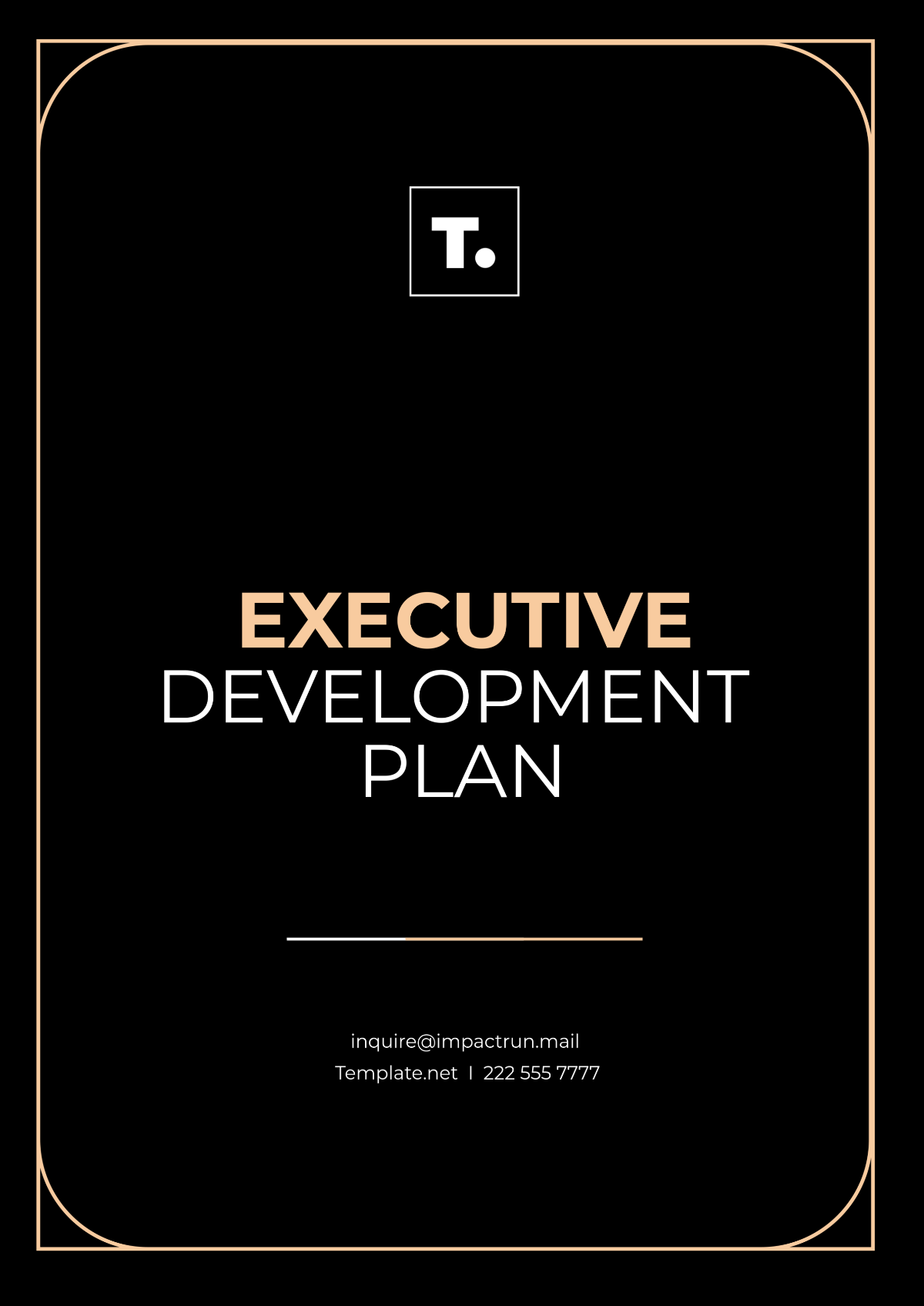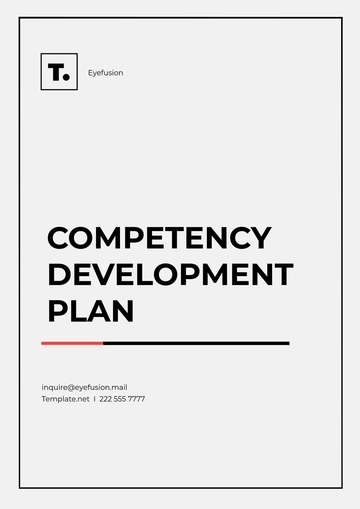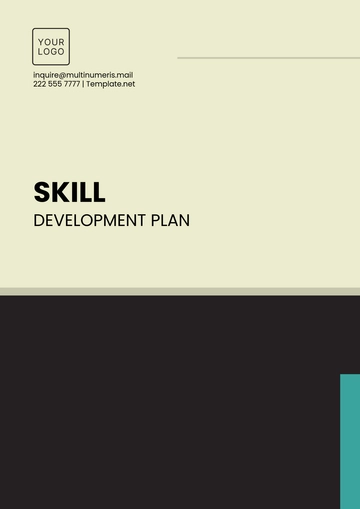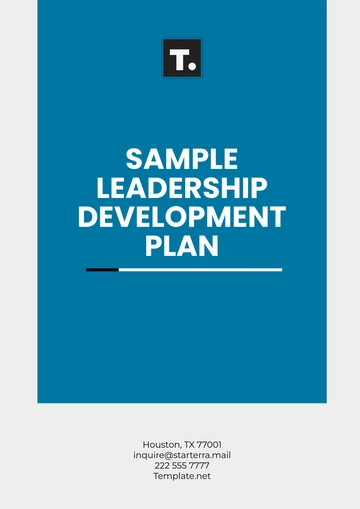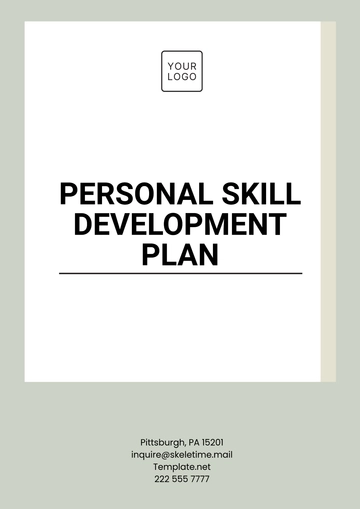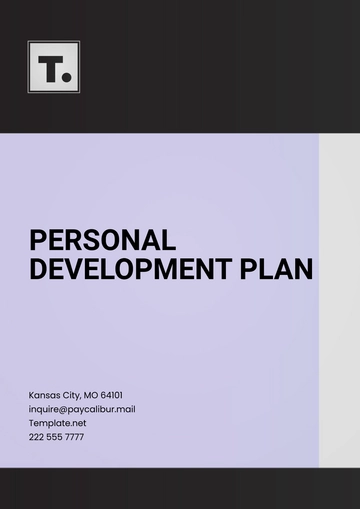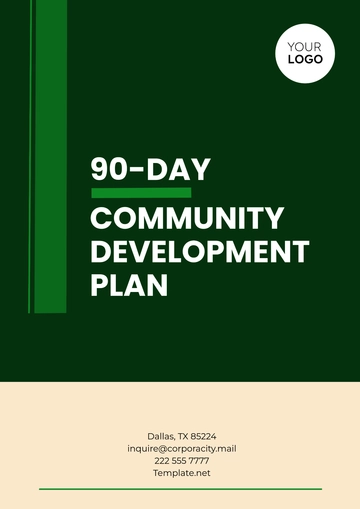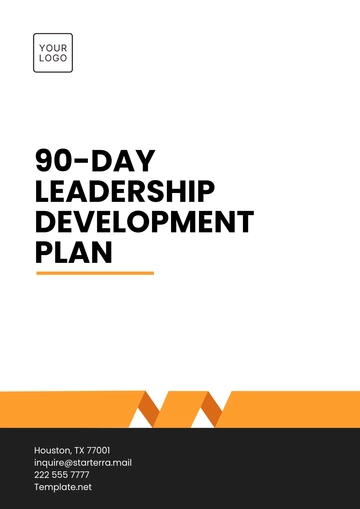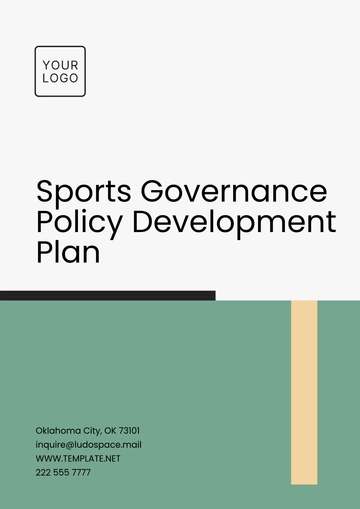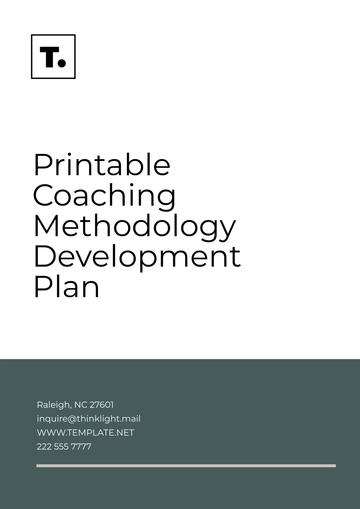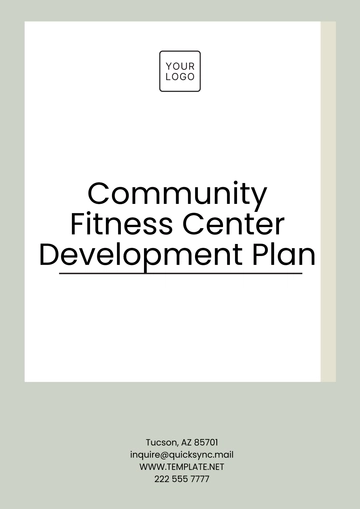Executive Development Plan
Written by: [YOUR NAME]
I. Introduction
As part of [YOUR COMPANY NAME]'s commitment to nurturing leadership talent and fostering professional growth, this Executive Development Plan (EDP) has been created for Pearl Bergna. This plan outlines key objectives and actions to support Pearl Bergna's development as a strategic leader within the organization.
II. Executive Summary
The Executive Leadership Development Plan (ELDP) is designed to enhance his leadership capabilities and drive strategic growth within [YOUR COMPANY NAME]. This plan outlines key objectives, development actions, and evaluation strategies to support Pearl Bergna's professional growth as a strategic leader.
III. Current Assessment
Strengths | Areas for Development |
|---|
Strong decision-making skills | Enhancing strategic thinking and long-term planning |
Excellent problem-solving abilities | Improving delegation and empowerment of team members |
Effective communicator | Developing leadership presence and influence |
IV. Development Objectives
1. Enhance Strategic Thinking
2. Strengthen Communication Skills
3. Build High-Performing Teams
4. Promote Innovation and Change Management
V. Development Actions
Quarter | Development Actions |
|---|
Quarter 1 (2050) | Attend "Global Leadership Summit" conference (Date: March 15-17, 2050). Schedule monthly meetings with a leadership coach to receive guidance on strategic thinking.
|
Quarter 2 (2050) | Enroll in the "Mastering Executive Communication" online course (Start Date: April 1, 2050). Deliver a keynote presentation at the company's annual leadership summit.
|
Quarter 3 (2050) | |
Quarter 4 (2050) | Attend the "Innovation Leadership Forum" to explore best practices in fostering innovation (Date: October 20-22, 2050). Lead a cross-functional team in implementing a new change management framework.
|
VI. Resource Allocation
A. Budget Allocation
Allocate $20,000 for training programs, conferences, and coaching sessions as outlined in the development actions. This budget includes registration fees, travel expenses, accommodation, and any materials or resources required for the development activities.
B. Time Management
Ensure sufficient time is allocated for attending workshops, participating in development activities, and implementing learned strategies. Coordinate with relevant departments to minimize operational disruptions during the implementation phase.
C. Resource Optimization
Optimize resource allocation by leveraging internal and external resources effectively. Explore opportunities for cost-effective development options, such as online courses, webinars, or in-house training programs.
D. Performance Monitoring
Establish clear performance metrics to monitor the impact of resource allocation on leadership development outcomes. Track key indicators such as participant satisfaction, skill acquisition, and application of learning in the workplace.
Implement regular performance reviews and evaluations to assess the effectiveness of resource allocation strategies. Solicit feedback from participants, supervisors, and other stakeholders to identify areas for improvement.
VII. Evaluation and Review
Conduct quarterly reviews to assess progress toward development objectives. Use a combination of self-assessment, peer feedback, and supervisor evaluation to provide comprehensive insights into development areas.
VIII. Measurement Metrics
Establish key performance indicators (KPIs) related to leadership development, such as improved team performance, increased employee engagement, or successful implementation of innovation initiatives. Use both qualitative and quantitative metrics to measure progress and impact.
IX. Conclusion
The Executive Development Plan outlined above aims to equip Pearl Bergna with the skills, knowledge, and mindset required to excel as a strategic leader within [YOUR COMPANY NAME]. By investing in professional development, we are investing in the future success of our organization. With a comprehensive plan in place and a commitment to ongoing evaluation and adjustment, we are confident that Pearl Bergna will continue to grow and thrive in his leadership role.
Plan Templates @ Template.net
